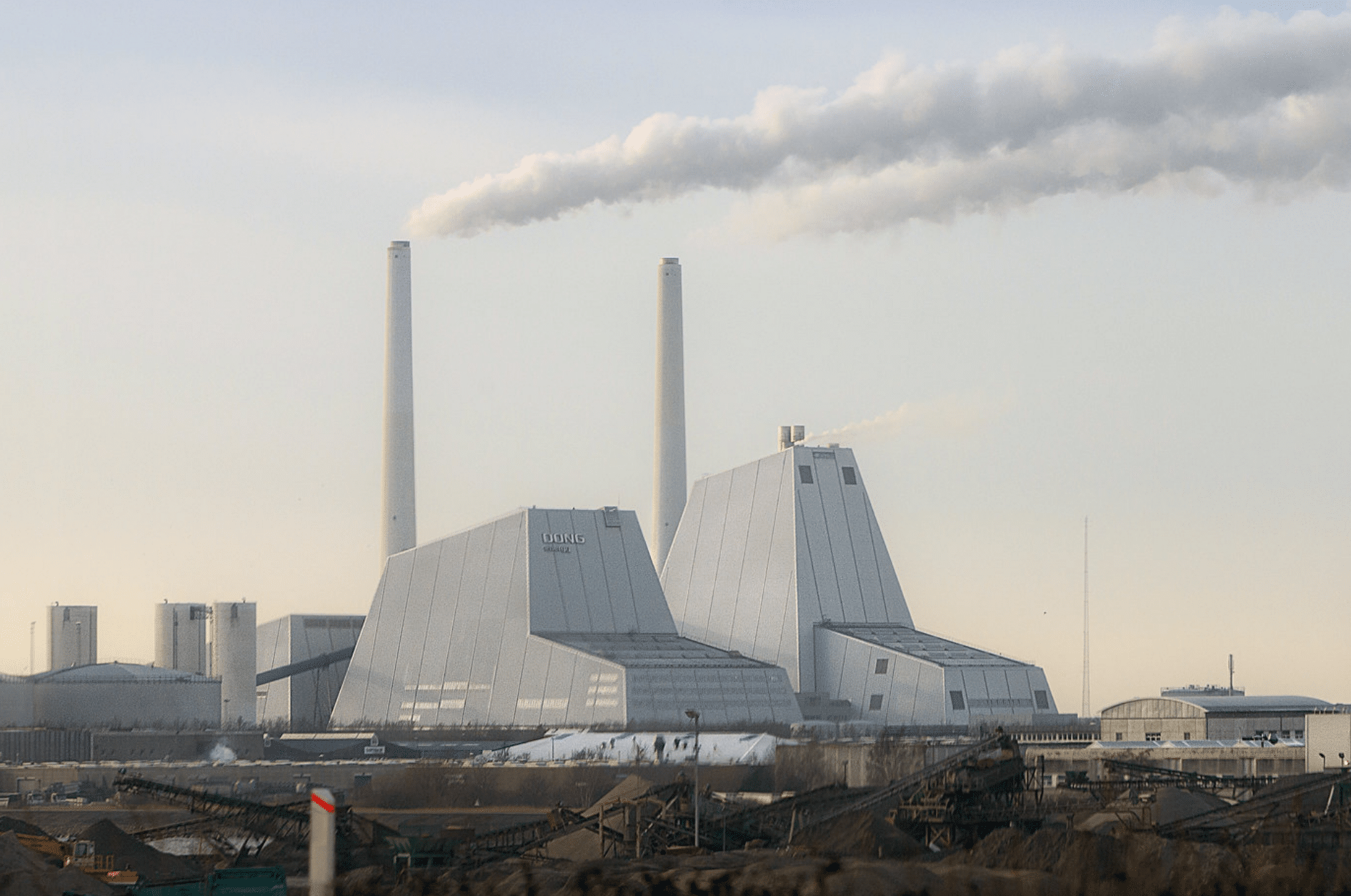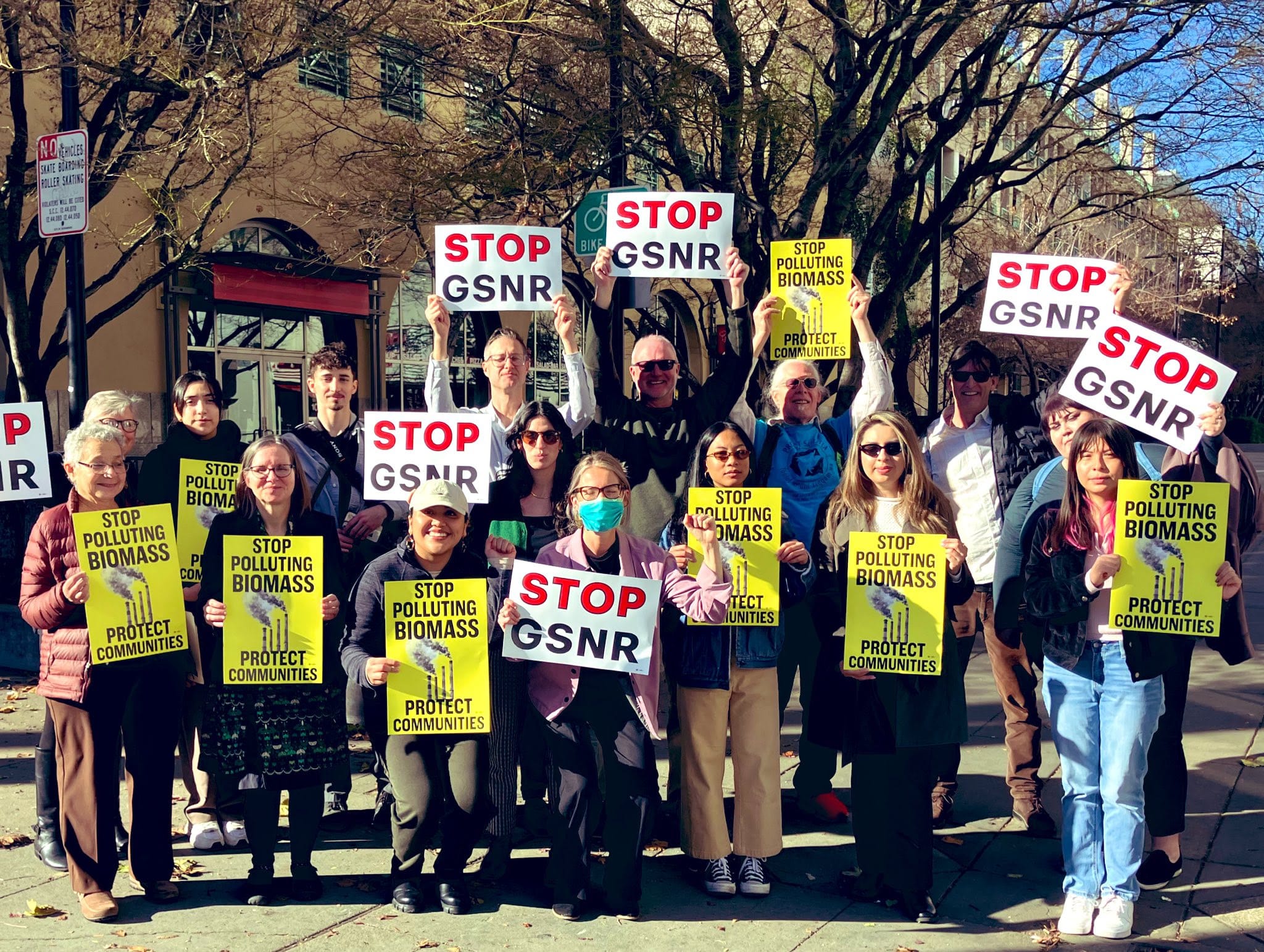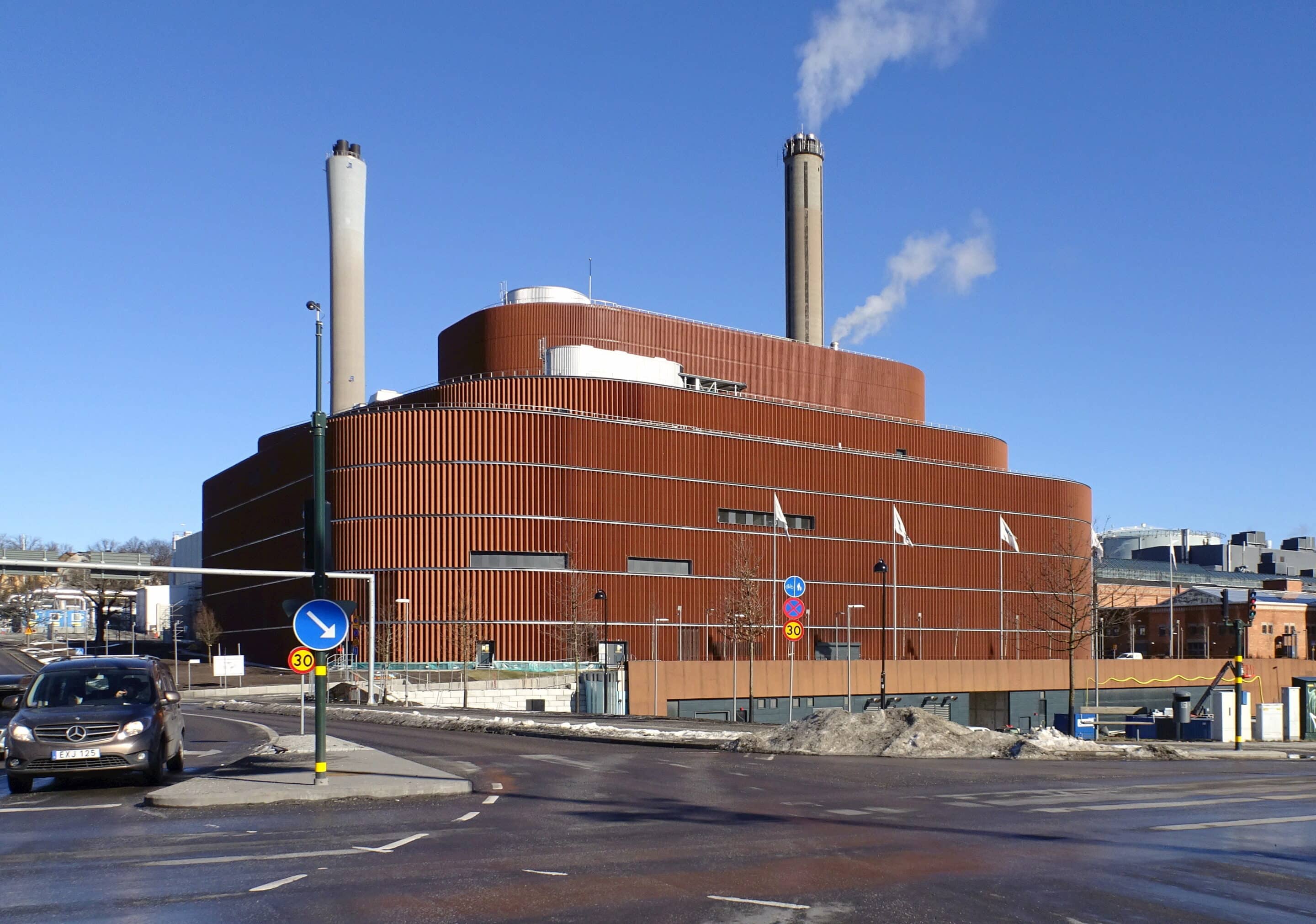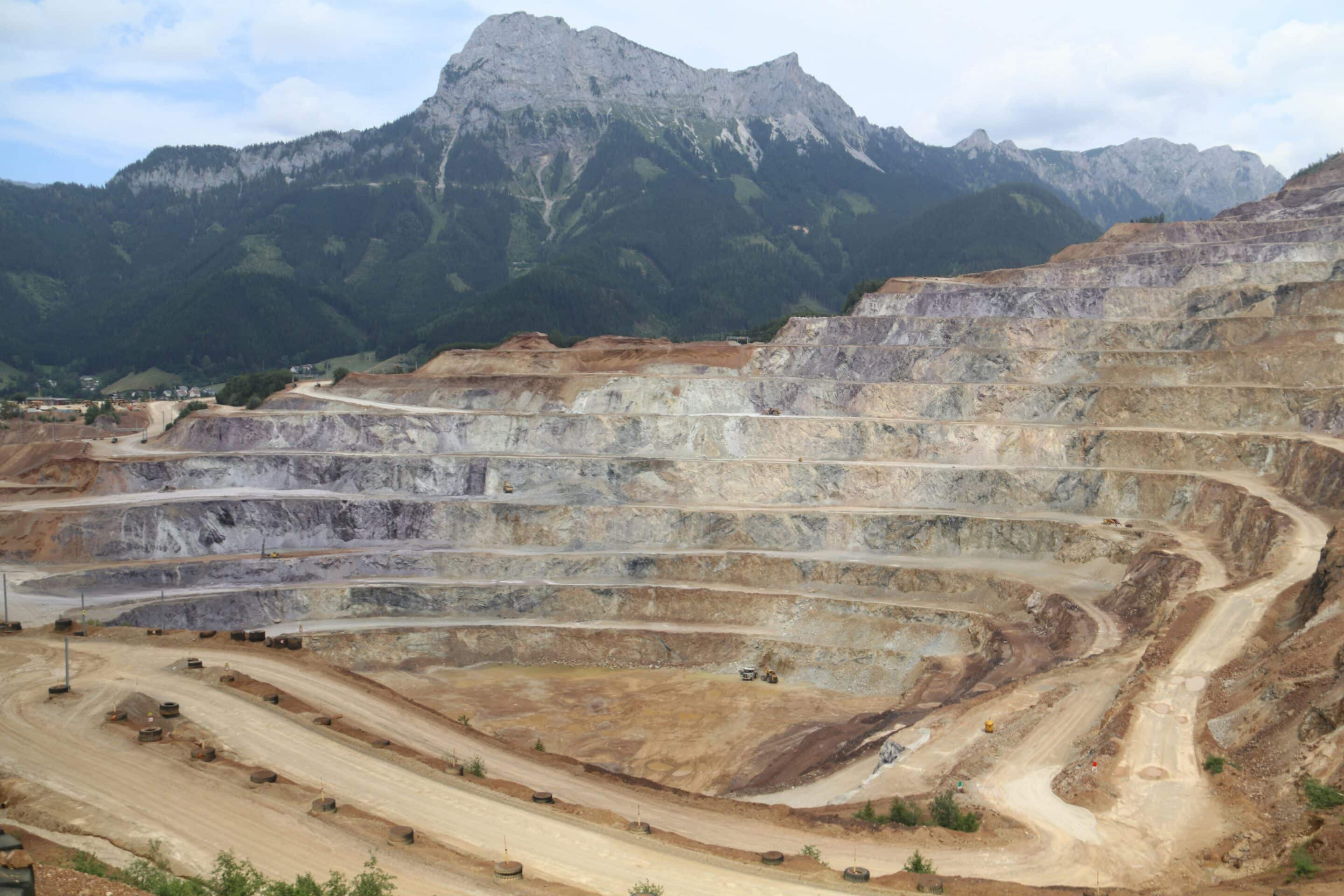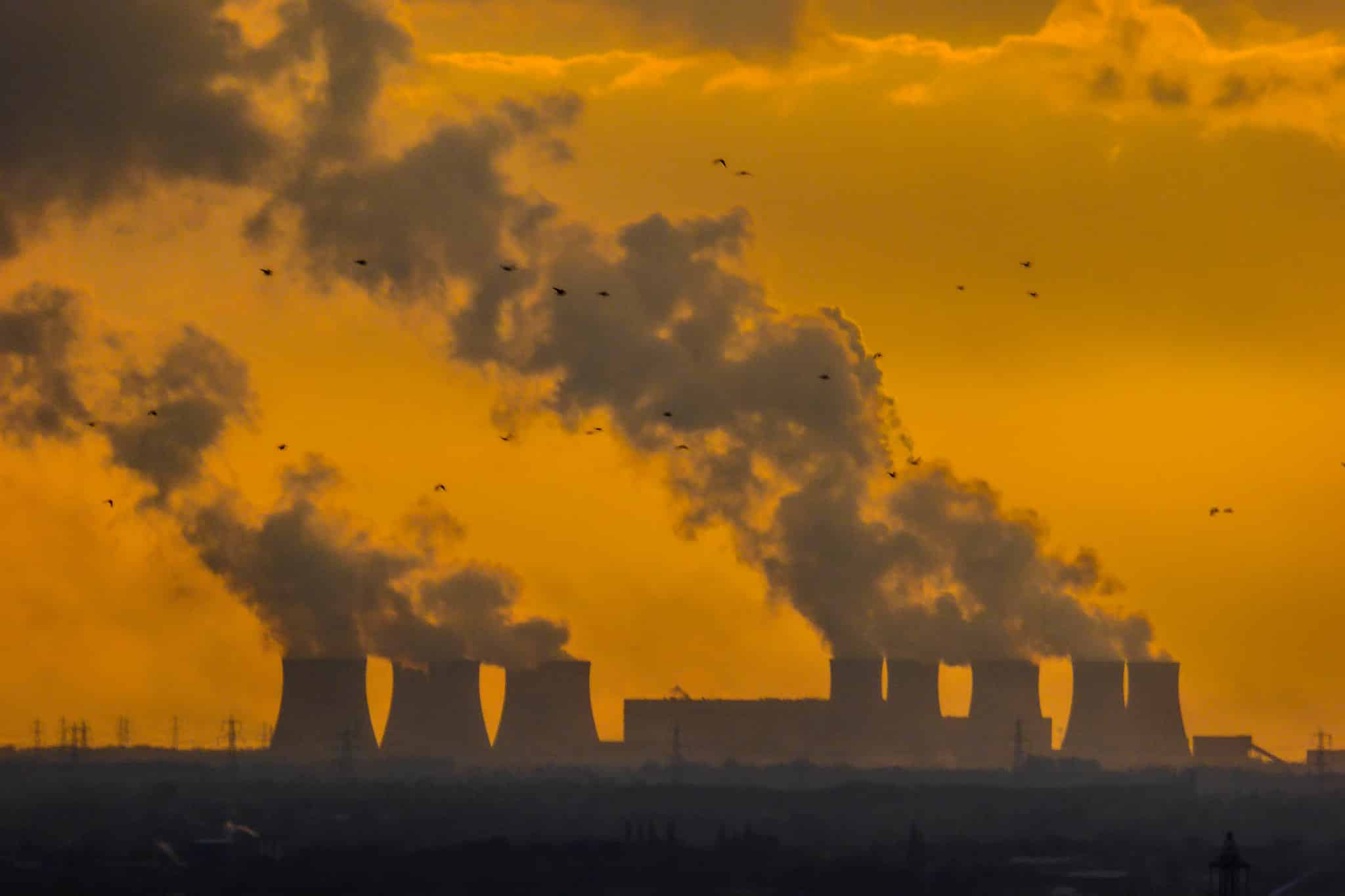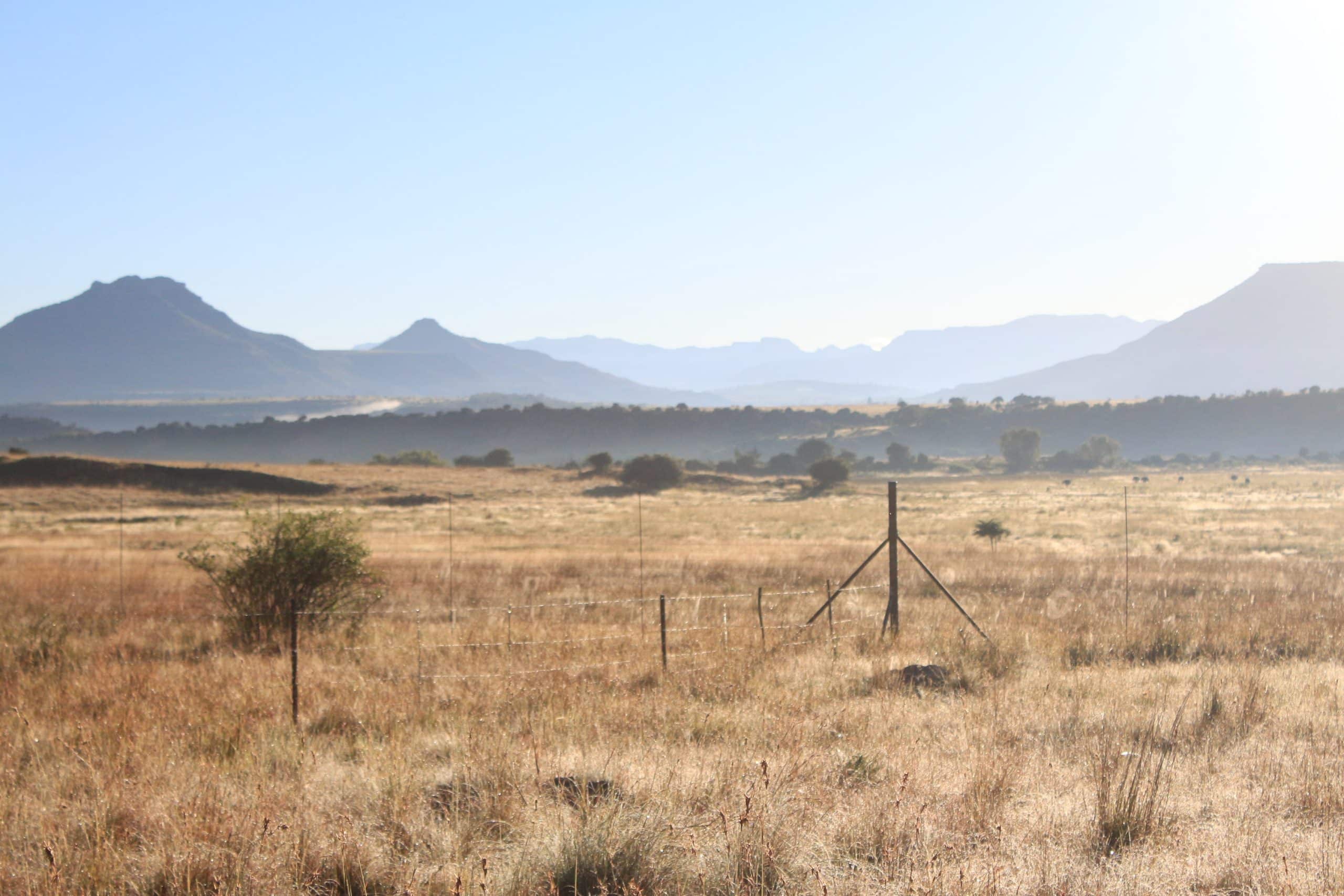Bioenergy with Carbon Capture and Storage
Type
Areas of deployment
Proposal

Featured project
Show on map
Latest technology update
Show update
Description and purpose of the technology
BECCS is a Carbon Dioxide Removal (CDR) technology that aims to capture carbon dioxide from bioenergy applications and then store it in geological formations through Carbon Capture and Storage (CCS) or reuse it through Carbon Capture, Use and Storage (CCUS). It involves burning very large quantities of biofuels and biomass from cultivated crops, trees and plant residues to generate energy, or converting them into ethanol to then be burned. Most BECCS schemes seek to capture the carbon dioxide released during combustion through an energy-intensive post-combustion capture process where carbon dioxide is filtered out of exhaust gasses.
If the carbon dioxide is to be stored via CCS, it is compressed into liquid form and transported to sites where it can be injected underground, where it will theoretically remain long-term. CCUS on the other hand “stores” captured carbon dioxide in manufactured products or synthetic fuels, usually only on a temporary basis. BECCS is referred to as “carbon negative” by its proponents because bioenergy generation is wrongly assumed to be “carbon neutral” and smokestack carbon emissions are therefore ignored, based on the idea that plants will regrow and reabsorb the carbon dioxide that has been emitted. This simplistic and flawed carbon accounting methodology has been widely debunked by a large body of scientific research. [1] It overlooks emissions from land use change as well as life cycle emissions, such as during cultivation, harvest and transport. It also ignores the carbon debt that results from the fact that, particularly in the case of trees, plants grow much more slowly than they are harvested and burned.
Despite the fact that BECCS technology is still largely unproven, and that its impacts from large-scale deployment would be socially and ecologically unacceptable, BECCS has taken center stage among CDR approaches. [2] Nearly all of the modeling scenarios limiting global warming to 1.5°C considered by the Intergovernmental Panel on Climate Change (IPCC) in its 2018 climate assessment report assume that BECCS will be technically and economically viable and can be successfully scaled up. [3]
Depending on the ambition of the mitigation pathway considered by the IPCC, removal on the order of 100-1,200 gigatons of carbon dioxide would be required through BECCS, which is equal to between three and 30 times current global annual emissions. Deployment at such a scale would translate into a land requirement of 0.1 to 0.8 billion hectares in order to satisfy the necessary demand for biomass and biofuels. For comparison: The world’s total cropland area is around 1.5 billion hectares today. Therefore, the IPCC’s climate scenarios could require up to half of global cropland to be turned over to bioenergy production. [4]
Actors involved
Most current BECCS projects are small-scale studies, operated at biomass-based ethanol production plants in the USA. The largest project is located at Archer Daniels Midland’s (ADM) Decatur corn-to-ethanol refinery. In 2011, the Decatur Project started as a “proof of concept” study. In 2017, the Illinois Industrial CCS Project added further capacity and now captures ~0,5 million tons of carbon dioxide annually from the fermentation process and injects the captured carbon dioxide underground. The demonstration project is funded by the U.S. Department of Energy (US-DOE) and ADM, and also receives support from other government agencies and companies. The project claims to reduce carbon dioxide emissions at the Decatur facility, but in reality the refinery emits more than it removes. This is because it is powered by fossil fuels, and ADM does not fully account life cycle emissions from corn production, which is an energy-intensive crop. [5]
A number of other BECCS projects with carbon dioxide capture capacities between ~0.1 and ~0.25 million tons annually are also in operation at ethanol plants in Canada, Belgium, the Netherlands, Saudi Arabia and Sweden. [6]
Another BECCS approach is based on power generation from biomass. Since 2012, the United Kingdom’s biggest power plant, Drax power station, has converted four of its six units to burn wood pellets instead of coal. In January 2024, it was granted government approval for a BECCS project to capture carbon from two of the converted units, which the company required in order to keep receiving lucrative public subsidies for electricity generation—estimated to be up to £43 billion over 25 years. The decision was widely denounced by environmental groups who fear it will pave the way for more forests around the world to be cut down, and millions more tonnes of carbon dioxide to be emitted into the atmosphere every year under the guise of an unproven, untested carbon capture technology. [7] In 2023, in order to meet less than 1% of the country’s recent final energy demand, Drax required over eight million tonnes of wood to produce the pellets that it burned, which is more wood than is produced in the UK every year. The majority (88%) of the biomass supply was imported from North America. [8]
Achieving a “negative carbon footprint” through the large-scale combustion of wood pellets is an implausible aim: pellet production is an energy-intensive process, because the biomass feedstock needs to be harvested, chipped, dried, pelletized and transported huge distances. [9] Additionally, shipping millions of tonnes of pellets by container vessel across the Atlantic Ocean annually generates pollutants and greenhouse gas emissions, including around 600 million tons of carbon dioxide. [10]
The carbon dioxide captured by currently-operational BECCS projects is generally used for Enhanced Oil Recovery (EOR), which leads to even more fossil fuel emissions (see CCS Technology Briefing), pumped into greenhouses to stimulate plant growth or sold for use in food and drink manufacture. [11] Despite the high-hopes that industry and policy-makers have pinned on BECCS, it is clear that the technology is not keeping up with expectations.
Impacts of the technology
The large-scale deployment of BECCS would come with large-scale adverse impacts on the climate, ecosystems and biodiversity, as well as profoundly negative social impacts. Generally, optimism around BECCS is based on two mistaken beliefs: 1) that bioenergy itself is “carbon neutral” because the carbon dioxide released from bioenergy will be offset by the carbon dioxide absorbed by new biomass growth and 2) carbon dioxide emissions from bioenergy can be effectively and reliably stored below ground.
Rather than being carbon neutral, a large body of peer-reviewed literature indicates that many, perhaps most, bioenergy processes result in even more carbon dioxide emissions than burning the fossil fuels they are meant to replace. [12] This is mainly due to emissions from land-use changes and soil disturbances for bioenergy crops, the overharvesting and degradation of forests and wooded landscapes and fossil fuel emissions along the supply chain from harvesting, transport and the increased use of fertilizers and agrochemicals.
Due to the fact that up to 50% more carbon dioxide is emitted when biomass is burned compared to coal in order to produce the same amount of energy, capturing carbon dioxide from bioenergy processes such as biomass-fired power stations is technically even more challenging and energy-intensive than capturing carbon dioxide from coal plants, which has been attempted many times, at great cost and with little success. [13] Higher carbon dioxide emissions mean that yet more energy must be dedicated to the carbon capture process itself. BECCS proponents also trust that geological storage of carbon dioxide in empty oil and gas reservoirs, or in deep saline aquifers, will be effective and reliable. Yet there is little real-world experience on which to base that faith, and it appears unlikely that geological storage will ever be able to guarantee reliable long-term storage (see Technology Briefing on CCS).
Scaling up bioenergy generation to the extent envisaged by even the most modest IPCC BECCS scenario would likely rely on fast-growing, industrial monoculture tree plantations to provide much of the raw material, which would have devastating impacts on ecosystems, water supply, soil and water quality, biodiversity and livelihoods, and compete directly with food production and food security. [14] Estimates for delivering a relatively modest three gigatons of carbon dioxide removal range from 380 to 700 million hectares in 2100, equivalent to 25-46% of the world’s current farmland. Such a high land demand would lead to significant competition and conflict over land, land grabbing, impacts on tenure rights and increased prices for basic food crops. It would effectively force millions of people from their land. A recent example of how bioenergy crops drive up food prices is the increase in corn-to-ethanol production in the US, which increased prices for tortillas, a staple food in Mexico, by 69%. [15]
BECCS would also have a very large water footprint which would exacerbate the impacts of climate change, which will already see the number of people suffering from water shortages potentially growing by billions. [16] Furthermore, BECCS deployment could lead to global chemical fertilizer consumption more than doubling, [17] which would cause increased impacts such as fertilizer run-off and eutrophication, [18] and the additional nitrous oxide emissions from fertilizer production alone could wipe out any potential carbon dioxide removal benefit from BECCS.
Given the technical challenges, it is unlikely that BECCS will ever be significantly scaled up. However, the damage done by the false confidence placed in this technofix and the scale-up of conventional bioenergy generation that is already resulting may be irreparable. Fantasy technologies like BECCS are the perfect excuse for polluters to keep using fossil fuels, betting on unproven “negative emissions” technologies to remove emissions at a sufficiently large scale in the future. The false promise of future negative emissions is therefore one of the most dangerous impacts of BECCS.
Reality check
BECCS is aspirational, unlikely to ever be technically or economically feasible and, contrary to misguided assumptions about the carbon impacts of bioenergy processes, it will never be able to effectively remove greenhouse gasses from the atmosphere. In fact, large-scale BECCS deployment would exacerbate climate chaos and lead to wide-spread food insecurity and conflicts over land.
Further reading
Biofuelwatch & Heinrich Böll Foundation, Summary BECCS report: Last ditch climate option or wishful thinking?, http://www.biofuelwatch.org.uk/2016/beccs-report-hbf/
Biofuelwatch, Full report – BECCS: Last ditch climate option or wishful thinking? http://www.biofuelwatch.org.uk/2015/beccs-report/
Global Forest Coalition, The risks of large-scale biosequestration in the context of Carbon Dioxide Removal, http://globalforestcoalition.org/risks-of-large-scale-biosequestration/
End notes
[1] See for example Gough, et al. (2018) Challenges to the use of BECCS as a keystone technology in pursuit of 1.5C, in: Global Sustainability, Vol. 1, Cambridge University Press, https://www.cambridge.org/core/journals/global-sustainability/article/challenges-to-the-use-of-beccs-as-a-keystone-technology-in-pursuit-of-15c/5E8AE2ECC9DCACB5DFE4B97BBE70476D/core-reader
[2] See, for example: The Royal Society (2009) Geoengineering the climate: science, governance and uncertainty, The Royal Society, Policy document 10/09, London, https://royalsociety.org/-/media/Royal_Society_Content/policy/publications/2009/8693.pdf
[3] IPCC (2018) Global warming of 1.5°C. An IPCC Special Report on the impacts of global warming of 1.5°C above pre-industrial levels and related global greenhouse gas emission pathways, in the context of strengthening the global response to the threat of climate change, sustainable development, and efforts to eradicate poverty [V. Masson-Delmotte, P. Zhai, H. O. Pörtner, D. Roberts, J. Skea, P.R. Shukla, A. Pirani, W. Moufouma-Okia, C. Péan, R. Pidcock, S. Connors, J. B. R. Matthews, Y. Chen, X. Zhou, M. I. Gomis, E. Lonnoy, T. Maycock, M. Tignor, T. Waterfield (eds.)], https://www.ipcc.ch/sr15/
[4] Fajardy, et al. (2019) BECCS deployment: a reality check, Imperial College London, Grantham Institute Briefing paper No 28, 14 pages, https://www.imperial.ac.uk/media/imperial-college/grantham-institute/public/publications/briefing-papers/BECCS-deployment—a-reality-check.pdf
[5] ETC Group and Heinrich Böll Foundation (2020) Geoengineering Map: Illinois Industrial CCS (former Decatur project), https://map.geoengineeringmonitor.org/Carbon-Cioxide-Removal/illinois-industrial-ccs-project-former-decatur-project/
[6] ETC Group and Heinrich Böll Foundation (2020) Geoengineering Map: BECCS (Bio-Energy with Carbon Capture and Storage), https://map.geoengineeringmonitor.org/
[7] Biofuelwatch (2024), Government approval of Drax’s BECCS project will cause more forest destruction, campaigners warn, https://www.biofuelwatch.org.uk/2024/government-approval-of-draxs-beccs-project-will-cause-more-forest-destruction-campaigners-warn/
[8] ETC Group and Heinrich Böll Foundation (2020) Geoengineering Map: Drax Project, https://map.geoengineeringmonitor.org/Carbon-Cioxide-Removal/drax-project/; Biofuelwatch (2024), #AxeDrax campaign, https://www.biofuelwatch.org.uk/axedrax-campaign/#BECCS; Drax (2024), Drax Group plc Annual report and accounts 2023, https://www.drax.com/wp-content/uploads/2024/03/Drax_AR23_Interactive.pdf
[9] Padilla-Rivera, et al. (2017) Environmental Performance of Eastern Canadian Wood Pellets as Measured Through Life Cycle Assessment, in: Forests, Vol. 8(9), 352, https://www.mdpi.com/1999-4907/8/9/352/pdf
[10] Calculation is based on: 7,000 km transport distance for 79% of the total amount of pellets burned in 2018. Transport via container vessel, generating 15,1 g of CO2 per km and ton (https://www.nabu.de/umwelt-und-ressourcen/verkehr/schifffahrt/containerschifffahrt/16646.html)
[11] ETC Group and Heinrich Böll Foundation (2020) Geoengineering Map: BECCS (Bio-Energy with Carbon Capture and Storage), https://map.geoengineeringmonitor.org/
[12] A compilation of peer reviewed literature is available at: biofuelwatch, Resources On Biomass, http://www.biofuelwatch.org.uk/biomass-resources/resources-on-biomass/
[13] Partnership for Policy Integrity (2011) Carbon emissions from burning biomass for energy, published online: March 17, 2011, http://www.pfpi.net/carbon-emissions
[14] Global Forest Coalition (2018) Working paper: The risks of large-scale biosequestration in the context of Carbon Dioxide Removal, https://globalforestcoalition.org/risks-of-large-scale-biosequestration/; The National Academies of Sciences, Engineering, and Medicine (2019) Negative Emissions Technologies and Reliable Sequestration: A Research Agenda, Washington DC: The National Academies Press, 510 pages, ISBN 978-0-309-48452-7, https://www.nap.edu/read/25259/chapter/7
[15] Stokstad (2019) Bioenergy plantations could fight climate change – but threaten food crops, U.N. panel warns, in: ScienceMag, published online, accessed: February 3, 2020, https://www.sciencemag.org/news/2019/08/bioenergy-plantations-could-fight-climate-change-threaten-food-crops-un-panel-warns
[16] Delucchi (2010) Impacts of biofuels on climate change, water use, and land use, in: Annals of the New York Academy of Sciences, Vol. 1195(1): 28 – 45
[17] Creutzig (2014) Economic and ecological views on climate change mitigation with bioenergy and negative emission, in: Global Change Biology – Bioenergy, Vol. 8(1): 4 – 10
[18] Burns and Nicholson (2017) Bioenergy and carbon capture with storage (BECCS): the prospects and challenges of an emerging climate policy response, in: Journal of Environmental Studies and Science, Vol. 7(4): 527 – 534
Bioenergy with Carbon Capture and Storage
TIPO
Zonas de despliegue
Propuesta

Proyecto destacado
Mostrar en el mapa
Última actualización de la tecnología
Mostrar actualización
Descripción y propósito de la tecnología
BECCS is a Carbon Dioxide Removal (CDR) technology that aims to capture carbon dioxide from bioenergy applications and then store it in geological formations through Carbon Capture and Storage (CCS) or reuse it through Carbon Capture, Use and Storage (CCUS). It involves burning very large quantities of biofuels and biomass from cultivated crops, trees and plant residues to generate energy, or converting them into ethanol to then be burned. Most BECCS schemes seek to capture the carbon dioxide released during combustion through an energy-intensive post-combustion capture process where carbon dioxide is filtered out of exhaust gasses.
If the carbon dioxide is to be stored via CCS, it is compressed into liquid form and transported to sites where it can be injected underground, where it will theoretically remain long-term. CCUS on the other hand “stores” captured carbon dioxide in manufactured products or synthetic fuels, usually only on a temporary basis. BECCS is referred to as “carbon negative” by its proponents because bioenergy generation is wrongly assumed to be “carbon neutral” and smokestack carbon emissions are therefore ignored, based on the idea that plants will regrow and reabsorb the carbon dioxide that has been emitted. This simplistic and flawed carbon accounting methodology has been widely debunked by a large body of scientific research. [1] It overlooks emissions from land use change as well as life cycle emissions, such as during cultivation, harvest and transport. It also ignores the carbon debt that results from the fact that, particularly in the case of trees, plants grow much more slowly than they are harvested and burned.
Despite the fact that BECCS technology is still largely unproven, and that its impacts from large-scale deployment would be socially and ecologically unacceptable, BECCS has taken center stage among CDR approaches. [2] Nearly all of the modeling scenarios limiting global warming to 1.5°C considered by the Intergovernmental Panel on Climate Change (IPCC) in its 2018 climate assessment report assume that BECCS will be technically and economically viable and can be successfully scaled up. [3]
Depending on the ambition of the mitigation pathway considered by the IPCC, removal on the order of 100-1,200 gigatons of carbon dioxide would be required through BECCS, which is equal to between three and 30 times current global annual emissions. Deployment at such a scale would translate into a land requirement of 0.1 to 0.8 billion hectares in order to satisfy the necessary demand for biomass and biofuels. For comparison: The world’s total cropland area is around 1.5 billion hectares today. Therefore, the IPCC’s climate scenarios could require up to half of global cropland to be turned over to bioenergy production. [4]
Actores involucrados
Most current BECCS projects are small-scale studies, operated at biomass-based ethanol production plants in the USA. The largest project is located at Archer Daniels Midland’s (ADM) Decatur corn-to-ethanol refinery. In 2011, the Decatur Project started as a “proof of concept” study. In 2017, the Illinois Industrial CCS Project added further capacity and now captures ~0,5 million tons of carbon dioxide annually from the fermentation process and injects the captured carbon dioxide underground. The demonstration project is funded by the U.S. Department of Energy (US-DOE) and ADM, and also receives support from other government agencies and companies. The project claims to reduce carbon dioxide emissions at the Decatur facility, but in reality the refinery emits more than it removes. This is because it is powered by fossil fuels, and ADM does not fully account life cycle emissions from corn production, which is an energy-intensive crop. [5]
A number of other BECCS projects with carbon dioxide capture capacities between ~0.1 and ~0.25 million tons annually are also in operation at ethanol plants in Canada, Belgium, the Netherlands, Saudi Arabia and Sweden. [6]
Another BECCS approach is based on power generation from biomass. Since 2012, the United Kingdom’s biggest power plant, Drax power station, has converted four of its six units to burn wood pellets instead of coal. In January 2024, it was granted government approval for a BECCS project to capture carbon from two of the converted units, which the company required in order to keep receiving lucrative public subsidies for electricity generation—estimated to be up to £43 billion over 25 years. The decision was widely denounced by environmental groups who fear it will pave the way for more forests around the world to be cut down, and millions more tonnes of carbon dioxide to be emitted into the atmosphere every year under the guise of an unproven, untested carbon capture technology. [7] In 2023, in order to meet less than 1% of the country’s recent final energy demand, Drax required over eight million tonnes of wood to produce the pellets that it burned, which is more wood than is produced in the UK every year. The majority (88%) of the biomass supply was imported from North America. [8]
Achieving a “negative carbon footprint” through the large-scale combustion of wood pellets is an implausible aim: pellet production is an energy-intensive process, because the biomass feedstock needs to be harvested, chipped, dried, pelletized and transported huge distances. [9] Additionally, shipping millions of tonnes of pellets by container vessel across the Atlantic Ocean annually generates pollutants and greenhouse gas emissions, including around 600 million tons of carbon dioxide. [10]
The carbon dioxide captured by currently-operational BECCS projects is generally used for Enhanced Oil Recovery (EOR), which leads to even more fossil fuel emissions (see CCS Technology Briefing), pumped into greenhouses to stimulate plant growth or sold for use in food and drink manufacture. [11] Despite the high-hopes that industry and policy-makers have pinned on BECCS, it is clear that the technology is not keeping up with expectations.
Impactos de la tecnología
The large-scale deployment of BECCS would come with large-scale adverse impacts on the climate, ecosystems and biodiversity, as well as profoundly negative social impacts. Generally, optimism around BECCS is based on two mistaken beliefs: 1) that bioenergy itself is “carbon neutral” because the carbon dioxide released from bioenergy will be offset by the carbon dioxide absorbed by new biomass growth and 2) carbon dioxide emissions from bioenergy can be effectively and reliably stored below ground.
Rather than being carbon neutral, a large body of peer-reviewed literature indicates that many, perhaps most, bioenergy processes result in even more carbon dioxide emissions than burning the fossil fuels they are meant to replace. [12] This is mainly due to emissions from land-use changes and soil disturbances for bioenergy crops, the overharvesting and degradation of forests and wooded landscapes and fossil fuel emissions along the supply chain from harvesting, transport and the increased use of fertilizers and agrochemicals.
Due to the fact that up to 50% more carbon dioxide is emitted when biomass is burned compared to coal in order to produce the same amount of energy, capturing carbon dioxide from bioenergy processes such as biomass-fired power stations is technically even more challenging and energy-intensive than capturing carbon dioxide from coal plants, which has been attempted many times, at great cost and with little success. [13] Higher carbon dioxide emissions mean that yet more energy must be dedicated to the carbon capture process itself. BECCS proponents also trust that geological storage of carbon dioxide in empty oil and gas reservoirs, or in deep saline aquifers, will be effective and reliable. Yet there is little real-world experience on which to base that faith, and it appears unlikely that geological storage will ever be able to guarantee reliable long-term storage (see Technology Briefing on CCS).
Scaling up bioenergy generation to the extent envisaged by even the most modest IPCC BECCS scenario would likely rely on fast-growing, industrial monoculture tree plantations to provide much of the raw material, which would have devastating impacts on ecosystems, water supply, soil and water quality, biodiversity and livelihoods, and compete directly with food production and food security. [14] Estimates for delivering a relatively modest three gigatons of carbon dioxide removal range from 380 to 700 million hectares in 2100, equivalent to 25-46% of the world’s current farmland. Such a high land demand would lead to significant competition and conflict over land, land grabbing, impacts on tenure rights and increased prices for basic food crops. It would effectively force millions of people from their land. A recent example of how bioenergy crops drive up food prices is the increase in corn-to-ethanol production in the US, which increased prices for tortillas, a staple food in Mexico, by 69%. [15]
BECCS would also have a very large water footprint which would exacerbate the impacts of climate change, which will already see the number of people suffering from water shortages potentially growing by billions. [16] Furthermore, BECCS deployment could lead to global chemical fertilizer consumption more than doubling, [17] which would cause increased impacts such as fertilizer run-off and eutrophication, [18] and the additional nitrous oxide emissions from fertilizer production alone could wipe out any potential carbon dioxide removal benefit from BECCS.
Given the technical challenges, it is unlikely that BECCS will ever be significantly scaled up. However, the damage done by the false confidence placed in this technofix and the scale-up of conventional bioenergy generation that is already resulting may be irreparable. Fantasy technologies like BECCS are the perfect excuse for polluters to keep using fossil fuels, betting on unproven “negative emissions” technologies to remove emissions at a sufficiently large scale in the future. The false promise of future negative emissions is therefore one of the most dangerous impacts of BECCS.
Visión realista
BECCS is aspirational, unlikely to ever be technically or economically feasible and, contrary to misguided assumptions about the carbon impacts of bioenergy processes, it will never be able to effectively remove greenhouse gasses from the atmosphere. In fact, large-scale BECCS deployment would exacerbate climate chaos and lead to wide-spread food insecurity and conflicts over land.
Lectura complementaria
Biofuelwatch & Heinrich Böll Foundation, Summary BECCS report: Last ditch climate option or wishful thinking?, http://www.biofuelwatch.org.uk/2016/beccs-report-hbf/
Biofuelwatch, Full report – BECCS: Last ditch climate option or wishful thinking? http://www.biofuelwatch.org.uk/2015/beccs-report/
Global Forest Coalition, The risks of large-scale biosequestration in the context of Carbon Dioxide Removal, http://globalforestcoalition.org/risks-of-large-scale-biosequestration/
Notas finales
[1] See for example Gough, et al. (2018) Challenges to the use of BECCS as a keystone technology in pursuit of 1.5C, in: Global Sustainability, Vol. 1, Cambridge University Press, https://www.cambridge.org/core/journals/global-sustainability/article/challenges-to-the-use-of-beccs-as-a-keystone-technology-in-pursuit-of-15c/5E8AE2ECC9DCACB5DFE4B97BBE70476D/core-reader
[2] See, for example: The Royal Society (2009) Geoengineering the climate: science, governance and uncertainty, The Royal Society, Policy document 10/09, London, https://royalsociety.org/-/media/Royal_Society_Content/policy/publications/2009/8693.pdf
[3] IPCC (2018) Global warming of 1.5°C. An IPCC Special Report on the impacts of global warming of 1.5°C above pre-industrial levels and related global greenhouse gas emission pathways, in the context of strengthening the global response to the threat of climate change, sustainable development, and efforts to eradicate poverty [V. Masson-Delmotte, P. Zhai, H. O. Pörtner, D. Roberts, J. Skea, P.R. Shukla, A. Pirani, W. Moufouma-Okia, C. Péan, R. Pidcock, S. Connors, J. B. R. Matthews, Y. Chen, X. Zhou, M. I. Gomis, E. Lonnoy, T. Maycock, M. Tignor, T. Waterfield (eds.)], https://www.ipcc.ch/sr15/
[4] Fajardy, et al. (2019) BECCS deployment: a reality check, Imperial College London, Grantham Institute Briefing paper No 28, 14 pages, https://www.imperial.ac.uk/media/imperial-college/grantham-institute/public/publications/briefing-papers/BECCS-deployment—a-reality-check.pdf
[5] ETC Group and Heinrich Böll Foundation (2020) Geoengineering Map: Illinois Industrial CCS (former Decatur project), https://map.geoengineeringmonitor.org/Carbon-Cioxide-Removal/illinois-industrial-ccs-project-former-decatur-project/
[6] ETC Group and Heinrich Böll Foundation (2020) Geoengineering Map: BECCS (Bio-Energy with Carbon Capture and Storage), https://map.geoengineeringmonitor.org/
[7] Biofuelwatch (2024), Government approval of Drax’s BECCS project will cause more forest destruction, campaigners warn, https://www.biofuelwatch.org.uk/2024/government-approval-of-draxs-beccs-project-will-cause-more-forest-destruction-campaigners-warn/
[8] ETC Group and Heinrich Böll Foundation (2020) Geoengineering Map: Drax Project, https://map.geoengineeringmonitor.org/Carbon-Cioxide-Removal/drax-project/; Biofuelwatch (2024), #AxeDrax campaign, https://www.biofuelwatch.org.uk/axedrax-campaign/#BECCS; Drax (2024), Drax Group plc Annual report and accounts 2023, https://www.drax.com/wp-content/uploads/2024/03/Drax_AR23_Interactive.pdf
[9] Padilla-Rivera, et al. (2017) Environmental Performance of Eastern Canadian Wood Pellets as Measured Through Life Cycle Assessment, in: Forests, Vol. 8(9), 352, https://www.mdpi.com/1999-4907/8/9/352/pdf
[10] Calculation is based on: 7,000 km transport distance for 79% of the total amount of pellets burned in 2018. Transport via container vessel, generating 15,1 g of CO2 per km and ton (https://www.nabu.de/umwelt-und-ressourcen/verkehr/schifffahrt/containerschifffahrt/16646.html)
[11] ETC Group and Heinrich Böll Foundation (2020) Geoengineering Map: BECCS (Bio-Energy with Carbon Capture and Storage), https://map.geoengineeringmonitor.org/
[12] A compilation of peer reviewed literature is available at: biofuelwatch, Resources On Biomass, http://www.biofuelwatch.org.uk/biomass-resources/resources-on-biomass/
[13] Partnership for Policy Integrity (2011) Carbon emissions from burning biomass for energy, published online: March 17, 2011, http://www.pfpi.net/carbon-emissions
[14] Global Forest Coalition (2018) Working paper: The risks of large-scale biosequestration in the context of Carbon Dioxide Removal, https://globalforestcoalition.org/risks-of-large-scale-biosequestration/; The National Academies of Sciences, Engineering, and Medicine (2019) Negative Emissions Technologies and Reliable Sequestration: A Research Agenda, Washington DC: The National Academies Press, 510 pages, ISBN 978-0-309-48452-7, https://www.nap.edu/read/25259/chapter/7
[15] Stokstad (2019) Bioenergy plantations could fight climate change – but threaten food crops, U.N. panel warns, in: ScienceMag, published online, accessed: February 3, 2020, https://www.sciencemag.org/news/2019/08/bioenergy-plantations-could-fight-climate-change-threaten-food-crops-un-panel-warns
[16] Delucchi (2010) Impacts of biofuels on climate change, water use, and land use, in: Annals of the New York Academy of Sciences, Vol. 1195(1): 28 – 45
[17] Creutzig (2014) Economic and ecological views on climate change mitigation with bioenergy and negative emission, in: Global Change Biology – Bioenergy, Vol. 8(1): 4 – 10
[18] Burns and Nicholson (2017) Bioenergy and carbon capture with storage (BECCS): the prospects and challenges of an emerging climate policy response, in: Journal of Environmental Studies and Science, Vol. 7(4): 527 – 534

